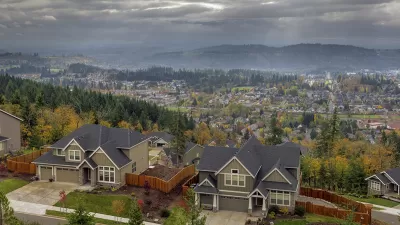Homeownership is declining in the United States, so what does the new homeowner of the post-recession era look like?

As the country has emerged from the Great Recession and the Millennial generation has come of age in a new kind of housing crisis, homeownership has declined and the whole idea of homeownership has taken on a new character.
Jenny Schuetz details the contemporary "face" of homeownership in the United States—i.e., "the demographic and economic characteristics of prospective homeowners."
Schuetz calls on household-level data from the most recent American Housing Survey (AHS 2015), using new homeowners as a proxy to compare to renters and long-time homeowners, as well as new homeowners in 2001 and 2015.
Click through to the article to see data on new homeowners as broken down by age, household size, race, wealth, education, and more, as well as the characteristics of the building stock new homeowners move into in 2015. Schuetz also packages all of the findings of this analysis in three policy implications that planners will want to note.
FULL STORY: Who is the new face of American homeownership?

Study: Maui’s Plan to Convert Vacation Rentals to Long-Term Housing Could Cause Nearly $1 Billion Economic Loss
The plan would reduce visitor accommodation by 25,% resulting in 1,900 jobs lost.

North Texas Transit Leaders Tout Benefits of TOD for Growing Region
At a summit focused on transit-oriented development, policymakers discussed how North Texas’ expanded light rail system can serve as a tool for economic growth.

Why Should We Subsidize Public Transportation?
Many public transit agencies face financial stress due to rising costs, declining fare revenue, and declining subsidies. Transit advocates must provide a strong business case for increasing public transit funding.

A Visual Celebration of Manhattan’s Chinatown Elder Community, Through Food
Lanterns, cafeteria trays, and community connection take center stage in this stunning photo essay.

How to Make US Trains Faster
Changes to boarding platforms and a switch to electric trains could improve U.S. passenger rail service without the added cost of high-speed rail.

Columbia’s Revitalized ‘Loop’ Is a Hub for Local Entrepreneurs
A focus on small businesses is helping a commercial corridor in Columbia, Missouri thrive.
Urban Design for Planners 1: Software Tools
This six-course series explores essential urban design concepts using open source software and equips planners with the tools they need to participate fully in the urban design process.
Planning for Universal Design
Learn the tools for implementing Universal Design in planning regulations.
City of Santa Clarita
Ascent Environmental
Institute for Housing and Urban Development Studies (IHS)
City of Grandview
Harvard GSD Executive Education
Toledo-Lucas County Plan Commissions
Salt Lake City
NYU Wagner Graduate School of Public Service




























